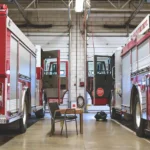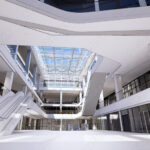Metal buildings can last several decades, with many steel structures enduring 50 years or more when properly maintained.
Which is better, steel or concrete building?
When deciding between steel and concrete for construction, it’s essential to consider the project’s specific needs. Steel buildings offer cost-effectiveness, faster construction, design flexibility, and sustainability due to their recyclability. They are also durable and low maintenance.
Concrete buildings, on the other hand, provide excellent strength, stability, superior fire resistance, and better thermal and sound insulation. The choice between the two materials should be based on factors such as budget, environmental conditions, and the intended use of the building, with each material offering distinct advantages for different scenarios.
While the initial material costs for metal buildings can sometimes be higher, the overall expenses are often reduced due to prefabrication and modular construction methods, which lead to lower labor costs and shorter construction times. School metal buildings require minimal maintenance over their lifespan, contributing to long-term cost savings. They are also known for their durability and longevity, which means less frequent replacements or repairs.
What are the typical warranties for steel school buildings?
Many manufacturers offer warranties that can last up to 20 years. These warranties typically cover important aspects such as the building’s roof and wall panels, providing peace of mind for the long-term durability and reliability of the construction.
What roofing options are available?
Pre-Engineered Metal Buildings (PEMBs) offer standard roofing options for diverse design preferences and functional needs. The gable roof is a classic choice with its dual sloping sides, while the hip roof presents a stable design with slopes on all sides.
The gambrel roof adds a traditional barn-like appearance with its distinctive slopes. For larger spaces, the clear span frame eliminates the need for internal columns, and the multi-span frame is cost-effective for wider buildings.
The single slope frame is practical for drainage considerations, and the lean-to frame is an economical extension solution. These options ensure that PEMB roofing is adaptable, durable, and suitable for a wide range of building projects.
How long does it take to construct a steel school building?
The construction timeline depends on various factors, such as the size, complexity, and location of the project. For medium to complex projects like metal school buildings, the project can be completed from quote to installation/construction in as little as 16-18 weeks.











